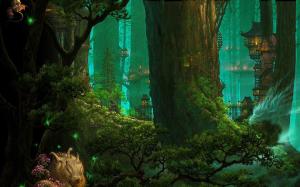Every writer is ultimately asked:
“What’s your book about?”
“Oh, it’s about this guy who kills a store clerk and then tries to hide from the police.” The recipient of this information will give a nod of the head and then ask:
“Yeah, but what’s your book about?” This is the point where the writer suddenly has no words. Why?
It all comes down to theme. It’s the difference between writing a book that has a lot of plot: bombs going off, people chasing other people, innumerable twists and turns, and reading a book that lasts in the mind of the reader beyond the ten minutes after the book is finished. If you look up any of the cheat sheets like SparkNotes, there is always a treatment about the theme of a book. Some are very broad, like it’s about the forces of good vs. evil. Note: most books are in some way. If one were to write the story I suggested above (I haven’t) one theme I might suggest is that the story concerns how superficial facts are often taken as gospel without looking to the root causes. The perpetrator’s guilt is assured by the public because they simply read the initial facts in the newspaper. It’s still very broad, but it now speaks to a dire societal tendency. Now the book will become an indictment on how the forces of criminal justice and public media operate. The resonance of the book will carry much farther because it’s about something other than how the character ducks the police or the vigilantes at every turn.
Some writers go in with certain themes in mind; others just get the story down on paper first. Either way works, and I’ve used both approaches. In some ways knowing your theme from the beginning is an advantage because you can bear it in mind as you write, and seize the opportunity in the moment to strengthen the ties to your theme. But, here’s the really cool part. If you just sat and wrote from page one to page three hundred with no thought as to what your story is about beyond its characters and plots, you will have subconsciously introduced theme or themes into your story. That’s why revision can be so much fun. Put the finished novel away for a month and then sit down quietly and read it from start to finish. Read it as a writer, and look for what surfaces. In one of my novels I did just that. I told the story of a boy who goes through several traumatic incidents as he tries to deal with his mother’s murder. On reflection, I realized that I had introduced themes of social injustice, racism, and bullying into it with no forethought at all. On revision (so many revisions, including rewriting the entire novel in third from first person) I underscored these issues and strengthened passages with backstory, dialogue, narrative, and plot. The story that emerged was so much better than the first draft, or even the second and third.
One piece of advice: the literary approach to writing dwells significantly on character and theme, but don’t worry about this. Just write. If you have a theme, great, if you don’t, then just get the whole thing down first. It’s my personal belief that it’s possible to achieve a balance between literary and mainstream novel writing. Dan Brown is often accused of writing plot boilers, but if you really look at his novels, he deals with some very substantial themes like the subjugation of women and overpopulation.
To borrow a familiar iconic quote: if you build it, they will come. In writing, if you write it, the theme will come.
Happy writing!










